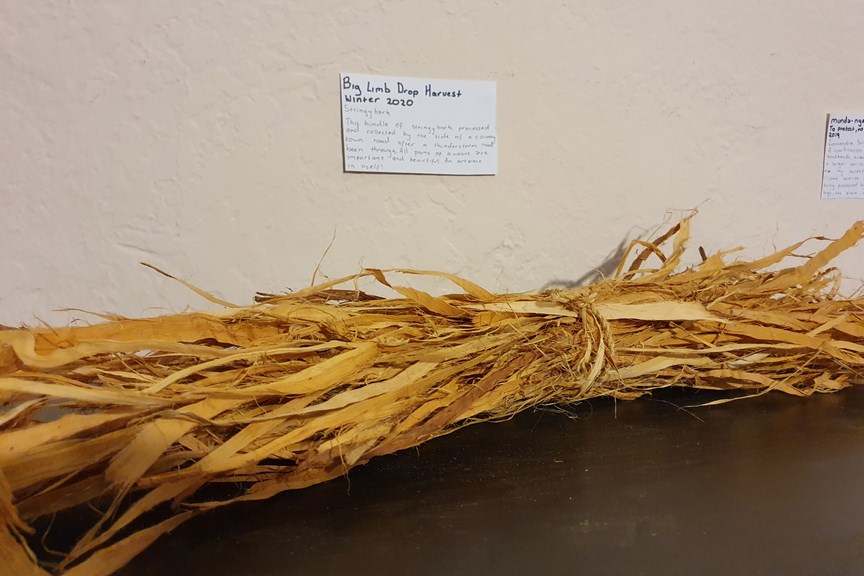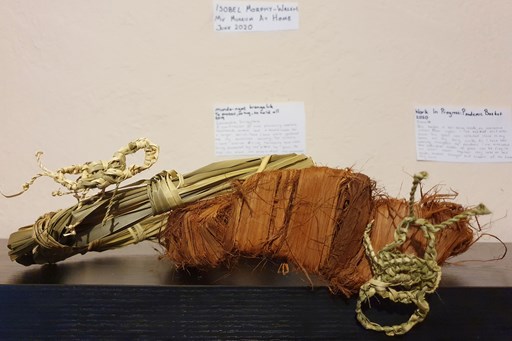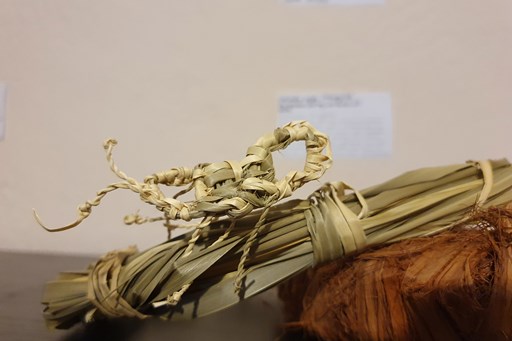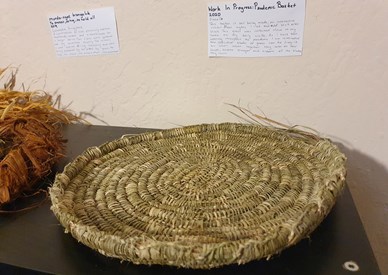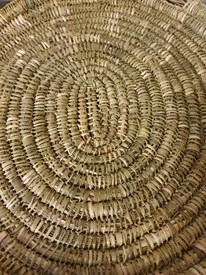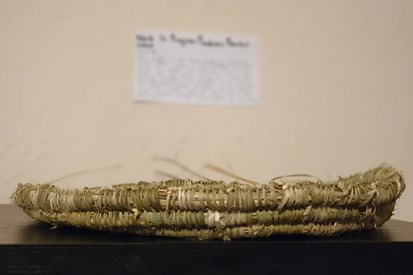My Museum at Home on Country
By Isobel Morphy-Walsh, June 2020
Artist’s statement: Why do I make, weave, collect and display?
My name is Isobel Morphy-Walsh and I am a proud Taun Wurrung (Taungurung) woman from the Eastern Kulin Nations. I am an artist, a storyteller and a weaver. My art and the things that I make are the ways in which I explore my culture, my land, my community and my understanding of who I am and what makes sense of the world.
I work for Museums Victoria as a First Peoples Story Shaper. This means I am lucky enough to get to work with the First Peoples communities across Victoria, and our cultures, histories and knowledge and be a part of the team that brings these stories to life.
I am a weaver. Taking individual fibres or blades of grass and weaving them into both objects of beauty and objects of practical use has helped me understand my country, the world and my place in it. Weaving strands together of grass somehow weaves thoughts and ideas together at the same time for me. Weaving begins with understanding the plants, understanding what they need, when they can be harvested. Understanding the seasons, the place and time to know the plant will continue and indeed employ the right collection method grow quicker and stronger than before. Understanding the creatures and critters that survive and depend on the plants you weave with and how to ensure they continue to have a home.
During the pandemic, thus far, I have been lucky enough to be back home on my country, the country my clans-people have walked for thousands and thousands of years. There has been much to think about and many changes to our lives and yet for me harvesting, processing and weaving has remained a constant. Biik (the country, the land) is still providing all we may ever need. The grass has kept growing!
I make, display and collect these things because they matter to me. It is knowledge that has been passed down through mine and other First Peoples families for generations. A weave connects me to the past and what has come before, back to the old people. It connects me to key values that I was grown to know. For example, biik (the country, the land) holds everything we need to not just survive but to thrive and so it is our responsibility to care for it and make sure this continues to be the case. A weave connects me to the present, to what is happening in the environment and what resources are available and when, to the people I am around. A weave connects me to the future, to what I hope for and dream of, to the weavers yet to be born that in hundreds of years will be not just using but loving the same grasses and the same stitches.
This bundle of stringy bark processed and collected by the side of a country town road after a thunderstorm had been through. All parts of a weave are important and beautiful. An art piece in itself!
A combination of two previously separate headbands, an ant and a beetle made for a larger series. These fibres were gathered on my ancestors country. The critters I came across during harvesting and were being protected by the plant. The grass, the bugs, the place, the people are all interconnected.
This basket is still being made; an interactive exhibit. Most nights I sit and add stitch after stitch. This grass was collected close to my home on my daily walks. As I have been weaving throughout the pandemic I am reminded how individual blades of grass can be fragile but when woven together they take on new shape, become stronger and support all the blades they touch.

